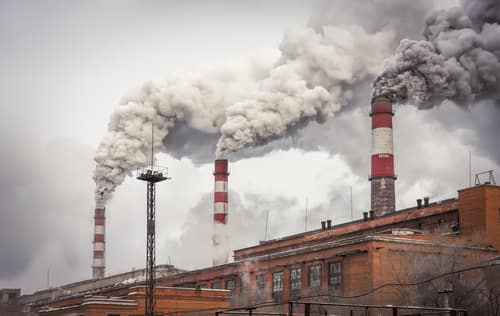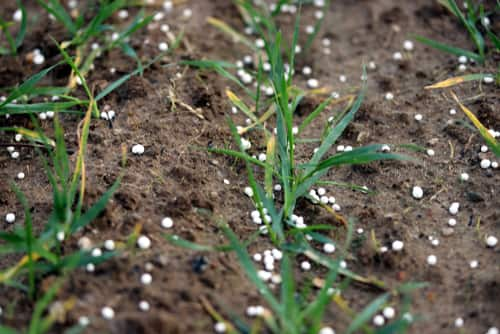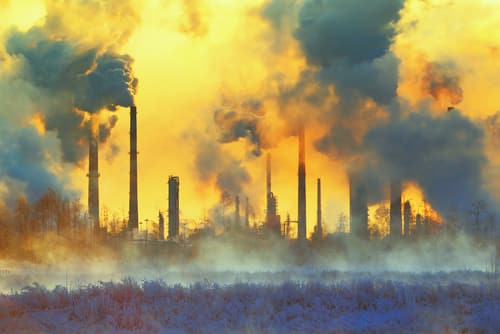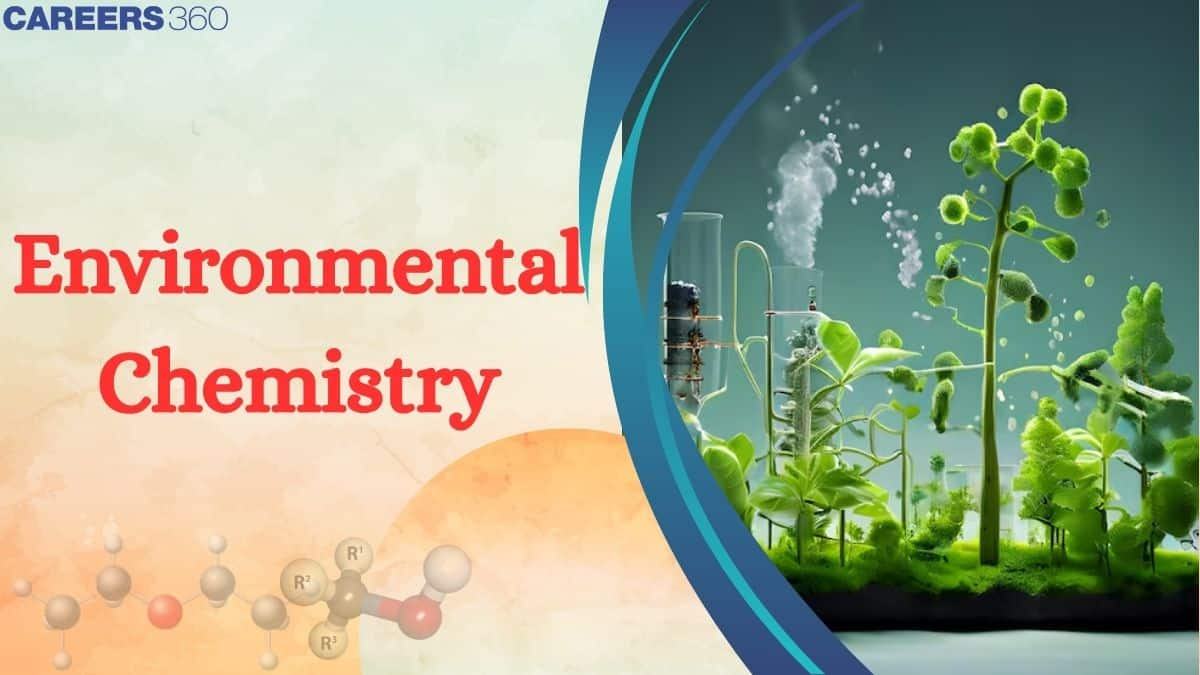Overview of the Chapter
Environmental Pollution: It is the condition when unwanted and harmful substances add on in the environment and create changes to it which is dangerous to all sorts of life. A substance which is responsible for pollution is known as a pollutant. Pollutants are degradable, some are easily degradable like discarded vegetables and some cannot be degraded by natural processes like DDT.
Atmospheric Pollution: The atmosphere is divided into various layers. All these various layers have different densities and height. The bottom layer of the atmosphere in which the humans live is known as the troposphere. This region is dusty, containing water vapour and clouds. Above this layer, there is stratosphere. This layer contains, dinitrogen, dioxygen, and ozone. The ozone present in this region protects us from the harmful ultraviolet radiations from the sun. Atmospheric pollution is the study of the pollution in these two layers.

Tropospheric Pollution is Caused by the presence of undesired solid and gaseous particles. Some of the gaseous and particulate pollutants are as follows:
(i) Gaseous air pollutants: These pollutants are nitrogen and carbon, oxides of sulphur, ozone, hydrogen sulphide, etc.
(ii) Particulate pollutants: These are dust, fumes, smog, smoke, etc.
Global Warming and the Greenhouse Effect: There are some of the gases carbon dioxide, methane, CFCs and water vapour than are responsible for global warming. Most of the sun’s energy when fall on the earth’s surface, then it is absorbed by the earth’s surface, only some of it goes back to the environment. Now, these gases like carbon dioxide, methane, CFCs, etc have the capacity to absorb this heat. In today’s time, the concentration of these gases especially of carbon dioxide is increasing due to which these gases are trapping more heat and thus the temperature of the environment is increasing. If this condition remains for long then it has very hazardous effects in the future like the melting of icebergs, flooding of low lying areas, etc.
Acid Rain: Acid rain is the situation when the oxides of nitrogen and sulphur dissolve with the rainwater. Burning of fossil fuels like coal and oil, etc. emit these oxides of sulphur and nitrogen. This acid rain very harmful to nature. If it is dissolved in the lakes or rivers then it is harmful to aquatic life. It is also harmful to agriculture, trees, and plants as it dissolves all the nutrients and hampers their growth. It is also harmful to buildings and other kinds of structures. Taj Mahal is getting affected by this acid rain.
Water Pollution: Water pollution is a very major problem in India and in fact worldwide. Today the condition is such that we can not even find the pure water around us. All rivers, ponds, lakes, streams, oceans have been polluted aggressively. Basically, there are important sources of water pollution as mentioned below.
- Pathogens: Pathogens are disease-causing microorganisms that enter into the water from various sources like sewage, industrial waste or animal excreta. These pathogens enter into the water and cause the water polluted and not usable. Some common pathogens are Escherichia coli and streptococcus faecalis.
- Organic Wastes: These are wastes such as leaves, woods, grass, etc. that entered into the water and pollute it. Basically, these organic materials entered into the water and rotten there and thus create the pollution. Phytoplanktons algae are also sources of water pollution.
- Chemical Pollutants: These are chemicals wasted that entered into the water and pollute it. Many times these chemicals are soluble in water but these chemicals also contain heavy metals like cadmium, mercury, nickel, etc. These heavy metals are dangerous for living beings and are the major cause of pollution.
Soil Pollution: Soil pollution is caused by excessive and consistent use of pesticides, insecticides, and herbicides. In agriculture, farmers use these substances to protect their crops from harmful insects. These fertilizers at that very moment found to be useful and effective but they are water-insoluble and non-biodegradable, thus they get collect in the soil and pollute it. Overuse of these fertilizers makes the soil ineffective for agriculture. The concentration of these toxic fertilizers increases buys 10 folds at each higher trophic level. Thus, when they reach to the human, they are in their most dangerous form.

Industrial Waste
All those waste materials that are released by the industries and harmful to the environment are known as industrial waste. Industrial waste are of two types i.e, biodegradable waste and non-biodegradable waste. Biodegradable waste is easy to handle because of a certain amount of time, these wastes get degraded but non-biodegradable wastes if not disposed of with proper treatment then it can cause various problems to the environment to the living beings.
Biodegradable wastes are released by cotton mills, textile factories, paper mills, etc. Non-biodegradable wastes are released by various sources such as thermal power plant, iron, and steel plants, industries manufacturing aluminium, fertilizers industries, etc.

Strategies to Control Environmental Pollution
After studying all these types of pollution, we understand that there is an urgent need of strategies to control these environmental pollutions. There are various kinds of wastes we have already studied. The domestic wastes are first collected in the bins. These bins are then taken to the disposal site. At this site, all these wastes are separated out into biodegradable and non-biodegradable wastes. Non-biodegradable wastes are sent for recycling and biodegradable wastes are converted into compost.
If these wastes are not collected properly then they get collected to sewers. Thus they choke the sewers. If these wastes are freely deposited on the streets then cattle eat them. Thus all these domestic wastes should be properly disposed and treated.
Green Chemistry
Green chemistry is the science which motivates us to think and utilize the existing knowledge to produce the products with minimum adverse effects on the environment.
Green Chemistry in Daily Life:
(i) Dry Cleaning of Clothes: Initially, Tetrachloroethene was used for dry cleaning of clothes. But it was found that this compound pollutes the groundwater and is carcinogenic. Now it is replaced by liquified carbon dioxide because this causes less harm to groundwater.
(ii) Bleaching of Paper: Initially, chlorine gas was used for bleaching paper. Nowadays, hydrogen peroxide is used with a suitable catalyst for bleaching.
(iii) Synthesis of Chemicals: Ethanal is now commercially prepared by one-step oxidation of ethene.
Some Important PYQs
Question: Which of the following chemicals are responsible for the depletion of the Stratospheric ozone layers?
(1) Refrigerants
(2) Propellants
(3) foam blowing agents
(4) all of the above
Answer:
Effects of Depletion of the Ozone Layer
With the depletion of the ozone layer, more UV radiation filters into the troposphere. UV radiations lead to ageing of skin, cataract, sunburn, skin cancer, killing of many phytoplanktons, damage to fish productivity etc. It has also been reported that plant proteins get easily affected by UV radiations which leads to the harmful mutation of cells. It also increases the evaporation of surface water through the stomata of the leaves and decreases the moisture content of the soil. Increase in UV radiations damage paints and fibres, causing them to fade faster.
Hence, the answer is the option (4).
Question: Which is / are true about secondary pollutants
(1) They are formed from primary pollutants
(2) They are formed through chemical and photo- chemical reactions
(3) Secondary pollutants are H2SO4, NO2,O3 , etc
(4) All of the above
Answer:
Secondary pollutant -
They are formed from primary pollutants
Secondary pollutants are H2SO4, NO2,O3 , etc
They are formed through chemical and photo-chemical reactions
All the statements are true.
Hence, the answer is the option (4).
Practice more questions from the link given below
For more questions to practice, the following MCQs will help in preparation of competitive examinations



